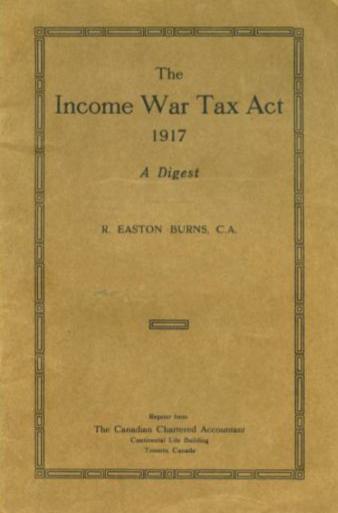
When the Canadian federation was formed in 1867, Section 91(3)of the British North America Act created a federal government with unlimited revenue collection power. The federal government was entrusted with costly programs of the time, most notably national defence and the building of cross-country railways. The Canadian federal government earned its revenue from tariffs on trade with excise taxes and customs. No income tax was instituted at that time to attract immigrants from the United States and England, where income tax had already been imposed, to a vast country grossly underpopulated. The provinces were given limited taxation power as provincial governments could only impose direct taxation such as property taxes, natural resource revenues, licenses, and permits. Transfer payments from the federal government are also a source of provincial government revenue.
Canada's entry into World War I changed government revenue landscape. The War had mostly been financed by the aforesaid means until 1917 when income tax was introduced as a temporary measure to fund the war. With the passing of the Military Service Bill in 1917, which called an additional 100,000 men to the armed forces of Canada, it became necessary to adopt further taxation measures to maintain the revenue of the Dominion to pay for war expenses. This compelled the Tories to pass the Income War Tax Act, which received Royal Assent on 20 September 1917. Income tax was supposed to be a "temporary" measure to support war effort.
Despite the new tax revenue, the Canadian government was considerable in debt during the war and was unable to forgo income tax after the war ended. Income tax has remained in place ever since and has become a permanent source of income to the Canadian government.
Income taxes in Canada are levied by both the federal and provincial governments collecting roughly three times more personal income taxes than it did corporate income taxes.
World War II led to dramatic change in the tax system. The percentage of Canadian government revenue from indirect taxes fell from 90% in 1913 to less than 40% by 1946. Instead, Canadians began to pay income taxes and direct taxes has since provided the greatest bulk of government funding.
[This page was added on 19 January 2013, last revised on 28 January 2013.]